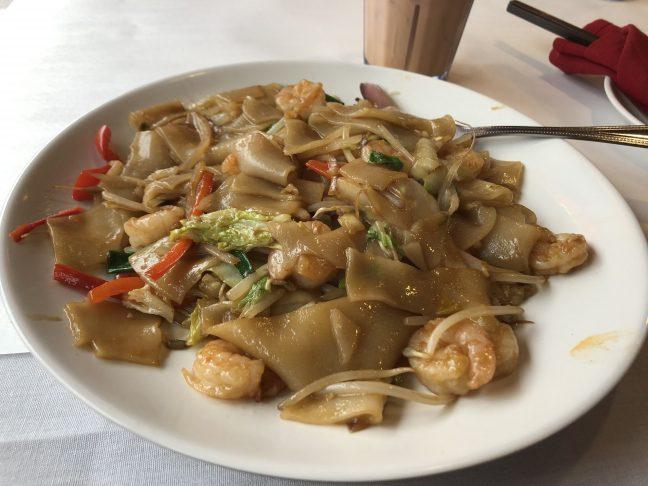Sometimes my status as a transfer students shows. When someone tells me they live by the old Jamba Juice or reminisces on a lost favorite hang-out spot, I typically smile and nod, though I have no clue what they’re talking about.
That being said, it has recently become impossible to ignore the changing atmosphere of State Street. Businesses on each block are rapidly shifting away from quaint occupations to modern approaches built to capitalize on University of Wisconsin’s student body. The changes recently have even spurred multiple franchise restaurants such as Glaze Teriyaki and Which Wich off Madison’s most iconic mile.
Likewise, when I saw workers swiftly cover Soga Shabu Shabu’s awning with one reading “Taste of Sichuan” one morning on my way up State Street to my 8 a.m. class, I immediately wondered if the block had lost its hot pot-filled Pan-Asian restaurant.
Thankfully, my worries were calmed as soon as my party walked into Taste of Sichuan. The decor remains practically unchanged, with the signature Buddha statute and painted red beams on room dividers meant to resemble the Wisconsin “W.” The menu received a graphics upgrade and one key change.
The formerly center-stage hot pot selections are now found at the end of the offerings, with more Sichuan and Hunan-style dishes receiving top billing. The “American Chinese Food” section is also now much easier to find, but also is now slightly more expensive than prices prior to the change. Notably, the chopsticks are much less intuitive to reach for than the forks in the restaurant’s place settings.
To start off our meal, my friends and I split a Thai Tea. Due to the sweet nature of the drink combined with its creamy condensed milk, it is feasible to share this yummy delight with the whole table. This iteration is creamier than the Thai Tea found a block down the street at Sencha, so I would definitely recommend saving the specialty for dessert and stick to water or Sapporo to compliment your meal.
Taste of Sichuan’s sit-down restaurant-style might scare some students into choosing a seemingly quicker, fast-casual spot as their lunch destination, but our main courses took about as long to come out as the line at Forage.
Attempting to reduce my gluten intake while thoroughly accepting soy sauce is surprisingly made from wheat, I sampled the rice noodles with shrimp. Given the countless times I’ve substituted Noodles and Company’s thin and long rice noodles into my mac and cheese, I was delightfully surprised to see noodles that looked like chow fun when my plate arrived. The thick noodles paired excellently with the shrimp and veggies put into the dish. At just over $11, this dish is at a comparable price point to the noodle options at Dragon I, though the lack of a price increase at Taste of Sichuan for shrimp is definitely a plus in their column.
My dining companions both sampled fare from the “American Chinese Cuisine” menu section. Everything on this page of the menu is fairly straightforward, with an egg roll and fried rice included in each meal and a fixed $9.95 price point for all dishes. The shrimp with broccoli featured a lovely mild sauce and large portions of shrimp.
Of course, these comments come with a caveat — none of us chose truly authentic dishes that are not found elsewhere around campus, which take up the majority of Taste of Sichuan’s menu. The signature hot pot is so far back in the menu and so expensive that many students may overlook the option.
Other delicacies like Spicy Pork Knuckle and Dry-Braised Bull Frog appear on the menu, but none of these options were considered by my dining group. It seems as though Taste of Sichuan has adopted the strategy of appealing to the mainstream with standard, Americanized fare and keeping authentic dishes available to those who wish to have them, even more so now than in its former identity.
Much like how we did not receive stereotypical fortune cookies after our delicious meal, the fate of the redesign is yet to be seen.


